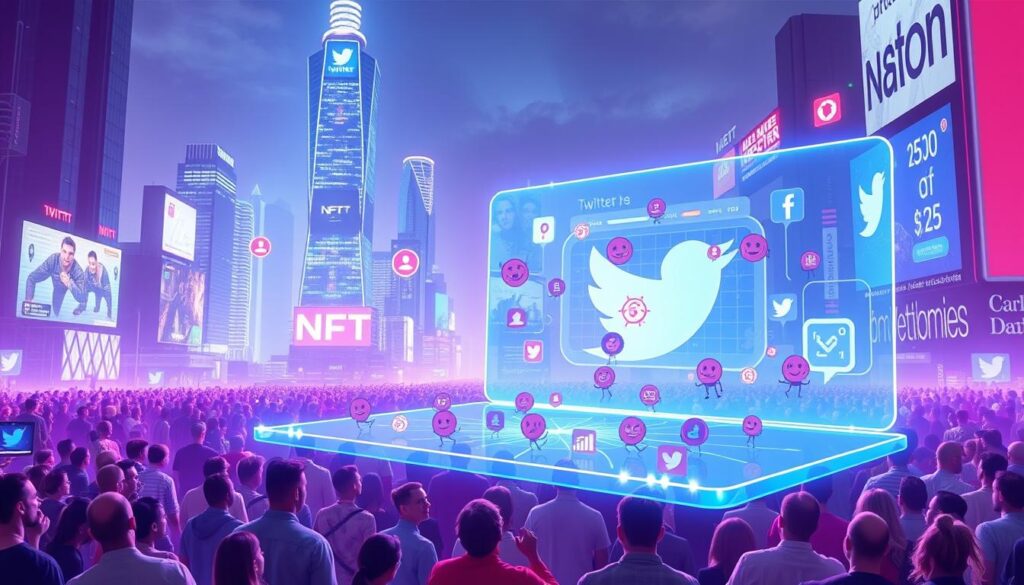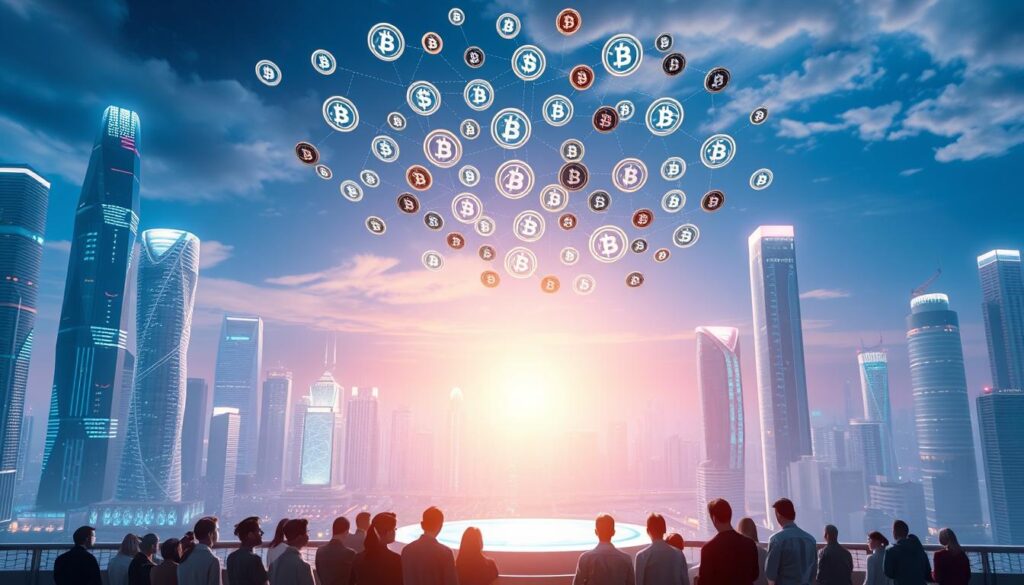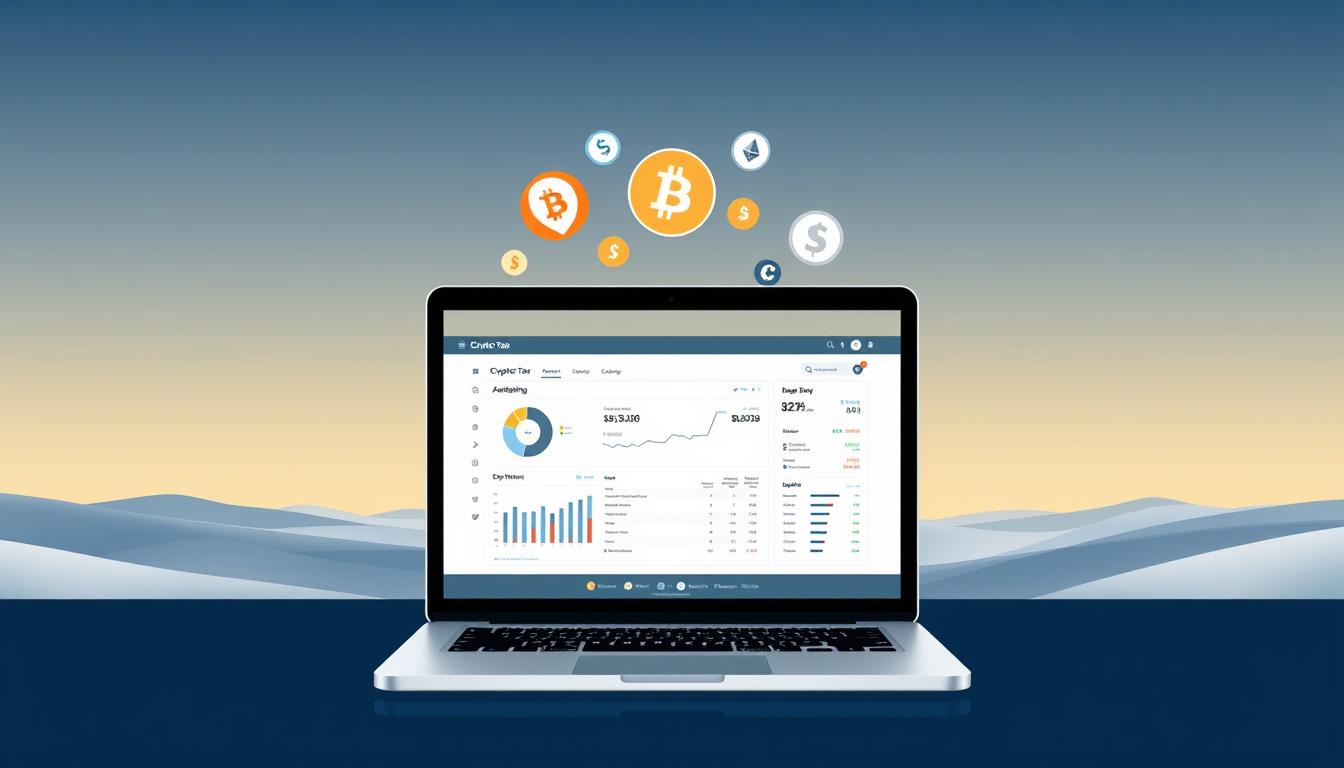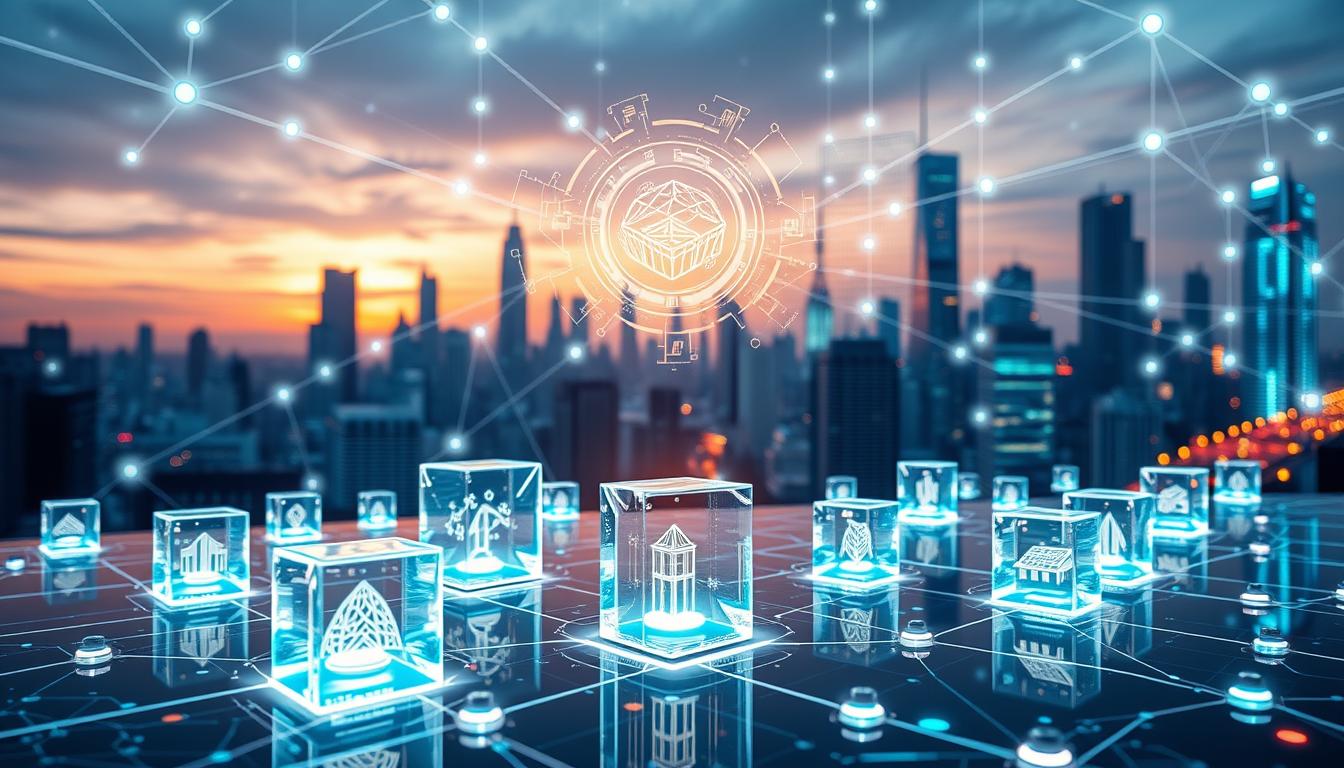Now Reading: A Practical Guide to Understanding NFTs and Blockchain
- 01
A Practical Guide to Understanding NFTs and Blockchain
A Practical Guide to Understanding NFTs and Blockchain

Blockchain technology and NFTs are changing how we own and trade digital items. This guide explains their basics. It shows how they work and why they’re important. Whether you’re new or want to learn more, this article covers the basics of non-fungible tokens and blockchain’s role in digital ownership.
Blockchain is a secure, decentralized ledger for tracking assets. NFTs represent unique items like art, music, or virtual goods. This guide looks at their connection, real-world uses, and how to get involved. See how these technologies build trust and value in the digital world.
Key Takeaways
- NFTs are digital items stored on blockchain networks as unique records.
- Blockchain ensures transparency and security for NFT transactions.
- Non-fungible tokens enable ownership verification for art, gaming, and more.
- Learn foundational concepts to navigate the NFT marketplace confidently.
- Explore practical applications across industries like art, real estate, and entertainment.
What Are NFTs and Blockchain Technology?
Blockchain and non-fungible tokens (NFTs) are key to today’s digital ownership shift. This section breaks down these technologies. It shows how they work together in the digital world.
Defining Blockchain in Simple Terms
Blockchain is a digital ledger kept on many computers. It’s like a public notebook where every change is recorded forever. This makes data safe and open to all, without a single boss.
- Decentralized network secured by encryption
- Immutable records prevent fraud
- Open for verification by anyone
Understanding Non-Fungible Tokens (NFTs)
Non-fungible tokens are unique digital items. They can’t be swapped like money. Each NFT has its own special data, proving it’s unique. Unlike regular money, NFTs show ownership of digital things like art or music.
- Art pieces stored as digital assets
- Music tracks or videos with unique IDs
- Collectibles tracked via blockchain
The Relationship Between NFTs and Blockchain
Blockchain supports NFTs by keeping their uniqueness. Every NFT’s history and details are recorded forever on the blockchain. This ensures NFTs are real and can’t be copied, making them valuable.
- Blockchain acts as the NFT’s “digital certificate”
- Smart contracts automate NFT ownership transfers
- Transparency lets buyers verify authenticity
The Evolution of Digital Ownership
For years, creators faced big challenges in protecting digital assets. Music, art, and media could be copied without limit, taking value away from the original creators. Early systems like digital rights management (DRM) tried to control access but failed to prove true ownership.
Without a secure way to track ownership, digital items often lost their value and uniqueness.
Blockchain changed everything in 2009 with Bitcoin, showing decentralized networks could record transactions. By 2015, Ethereum added smart contracts, making it possible to set rules for ownership. This led to tokenization, turning items into unique blockchain-based tokens.
In 2017, the ERC-721 standard came out, allowing Ethereum to host non-fungible tokens (NFTs). Suddenly, digital art, collectibles, and even virtual real estate became scarce and traceable.
Today, tokenization makes sure every digital asset has a clear history. Blockchain’s tamper-proof ledger lets anyone check ownership instantly. This change isn’t just about technology—it’s about culture.
For the first time, creators can sell art directly, fans own rare digital items, and businesses tokenize real-world assets. The journey from chaos to clarity shows how blockchain redefined digital ownership.
How Blockchain Technology Powers NFTs
Blockchain is the key to NFTs, making digital ownership safe and clear. It’s a network of computers that keeps data safe. This means no one person can control it, like a global spreadsheet updated by thousands.

The Decentralized Nature of Blockchain
Think of a library where every book is in every branch. Blockchain works like that: every computer has the whole ledger. This makes sure NFT data is safe from being deleted or changed.
No single person controls it. You own your NFTs with private keys, not some big company.
Immutability and Transparency Features
Blockchain entries can’t be changed once they’re made. Every NFT’s history is forever visible. This builds trust in digital items.
For example, a digital painting on Ethereum’s blockchain can’t be erased. It proves who made it and its history.
Smart Contracts and Their Role
Smart contracts make NFT rules happen without anyone in the middle. They’re programs that follow rules, like paying royalties when an NFT sells again. For example, a musician might set up a smart contract to get 10% of every resale.
Types of NFTs in Today’s Digital Marketplace
Discover the wide world of NFTs that are changing digital economies. They range from art to real estate, making virtual ownership unique.
Digital Art and Collectibles lead the market. Artists like Beeple have made headlines with huge sales. For example, Everydays: The First 5000 Days sold for $69 million. Crypto collectibles, like CryptoPunks and Bored Ape Yacht Club, are rare and valuable.
- Music and Entertainment NFTs: Artists, like Kings of Leon, release albums as unique digital items. Fans get special content or limited merchandise.
- Virtual Real Estate: Places like Decentraland and The Sandbox let you buy and build virtual land. Some parcels sell for millions in ETH.
- Utility NFTs: These tokens offer more than looks. They give access to concerts, gaming boosts, or voting rights in projects like Decentraland’s LAND.
Whether it’s art, music, or virtual land, the value of digital assets comes from their uniqueness. This makes the NFT world exciting for both creators and collectors.
Creating Your First NFT: A Step-by-Step Process
Starting with tokenization, turn your digital assets into unique, blockchain-verified collectibles. Here’s how to mint and list your creation:
- Prepare your digital asset: Pick art, music, or media. Make sure formats are high quality (PNG/JPEG for images, MP4 for videos).
- Set up a crypto wallet: Use MetaMask or Trust Wallet. Buy ETH or SOL to pay for gas fees on platforms like OpenSea.
- Select a marketplace: Choose Rarible or Mintable. Link your wallet and confirm network fees.
- Mint your NFT: Upload files, add metadata (title, description), and set editions. Enable royalties (5-10%).
- List for sale: Set a price or auction. Write a compelling description. Preview details before finalizing.
Avoid common mistakes: digital assets must be original to avoid copyright issues. Watch gas prices to save money during peak times. Test the minting process on testnets before final submission.
Once live, share your NFT on social media and forums. Track activity and adjust strategies based on market trends. Every step ensures your creation becomes a verified part of the NFT ecosystem.
Choosing the Right Blockchain Platform for Your NFT Projects
Choosing a blockchain platform for your NFTs is key to success. Each platform has its own trade-offs in cost, speed, and support. First, think about your project’s goals to find the best match.
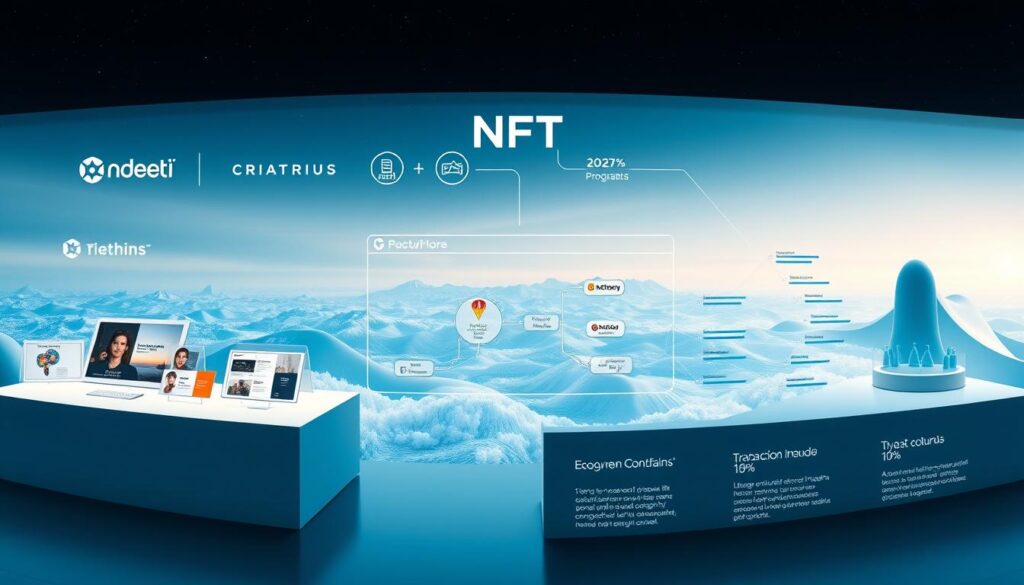
Ethereum and ERC-721 Standard
Ethereum led the way in blockchain NFTs with the ERC-721 standard. It has a big user base and well-known marketplaces like OpenSea. But, high gas fees and energy use are downsides. Cryptocurrency costs are important for frequent trades.
Alternatives to Ethereum: Solana, Polygon, and Others
- Solana: Fast transactions at low costs, perfect for big projects.
- Polygon: An Ethereum sidechain that cuts fees while keeping compatibility.
- Tezos and Flow: They focus on being green and offer special tools for creators.
Factors to Consider When Selecting a Platform
- Cost: Look at gas fees and transaction speeds.
- Community: Bigger ecosystems mean more visibility but also more competition.
- Environmental Impact: Choose platforms that are good for the planet like Tezos or Proof-of-Stake networks.
- Tooling: Focus on platforms with tools that are easy for developers and good for marketplaces.
Check out platform roadmaps and developer communities for long-term support. Your choice affects how NFTs work with users and markets.
NFT Marketplaces: Where to Buy and Sell Digital Assets
Choosing the right platform is key to buying and selling NFTs. OpenSea, the largest NFT hub, and Rarible are top choices. They provide wide access to digital assets. Users can list items, bid on collectibles, and track sales using blockchain.
- SuperRare focuses on digital art, curating high-quality works.
- Catalog and NBA Top Shot dominate music and sports collectibles.
- Axie Marketplace streamlines gaming asset trades.
Before picking a platform, compare fees, supported blockchains, and user verification steps.
Marketplace tools make browsing easier. Filters help find valuable NFTs by rarity, price, and creator history. Always verify wallet addresses and check seller histories to avoid scams. New tools search across platforms, and decentralized exchanges cut down on third-party reliance.
When selling or buying NFTs, research fees and audience demographics. This ensures your goals match the platform. Always choose platforms that fit your collection’s niche and target buyers.
Understanding Gas Fees and Transaction Costs
Every transaction on blockchain networks like Ethereum requires users to pay gas fees. These fees are like tolls on a busy highway. They increase with demand or complex transactions, affecting decentralized finance and NFT activity.
What Are Gas Fees?
Gas fees measure the cost of executing smart contracts or transferring assets on a blockchain. On platforms like Ethereum, each action—minting an NFT or transferring crypto—consumes “gas,” priced in units like ether (ETH). Fees rise during network congestion, making timing critical for cost management.
Strategies to Minimize Transaction Costs
- Track network activity: Use tools like ETH Gas Station to find low-fee periods.
- Batch transactions: Group actions into one block to reduce total fees.
- Opt for off-peak hours: Execute during off-peak times when demand is lower.
Layer-2 Solutions for Cost Efficiency
Platforms like Polygon and Optimism offer Layer-2 scaling solutions. These systems process transactions off the main blockchain, then settle results on-chain, slashing fees by up to 90%. Projects like Immutable X specialize in NFTs, making gas costs negligible for creators and collectors.
Security Best Practices for NFT Collectors and Creators
Keeping NFTs and cryptocurrency safe is crucial. Start by securing your wallets. Hot wallets are easy to use but riskier than cold wallets for valuable assets. Always use two-factor authentication and keep seed phrases safe and offline.
Before you buy NFTs, check the smart contract addresses and research the creators. Watch out for sudden price drops or unknown teams. Creators should protect their work by registering it and using secure storage to avoid plagiarism.
- Always check marketplace URLs to avoid phishing sites
- Avoid links from unsolicited messages claiming crypto rewards
- Use verified platforms like OpenSea or Rarible for listings
Scammers might look like real NFT projects or offer fake airdrops. If your account gets hacked, act fast. Freeze accounts, tell platforms, and report to the authorities. Stay up to date with Numen Cyber’s NFT security guide to stay ahead of threats.
The Environmental Impact of NFTs and Blockchain
As NFTs become more popular, people start to wonder about their environmental impact. Blockchain networks, especially those using Proof-of-Work (PoW), need a lot of computing power. For example, Ethereum’s old PoW system used as much energy as small countries.
Energy Consumption Concerns
– PoW-based blockchain systems need lots of energy to validate transactions. Early NFT transactions on Ethereum alone caused a lot of emissions.
– Some say minting NFTs uses as much energy as flying in airplanes or running data centers.
Shifting to Sustainability
Solutions are coming:
– Blockchain platforms like Tezos and Solana use less energy, cutting it by 99%.
– Some projects offer carbon-offset NFTs, helping to plant trees or support renewable energy.
– Ethereum changed to Proof-of-Stake (PoS) in 2022, reducing energy use by ~99.95% and focusing on being eco-friendly.
Smart choices are important. Creators and buyers can choose eco-friendly blockchain networks or support projects that offset emissions. The future of cryptocurrency-backed assets depends on finding a balance between innovation and being green.
Legal Considerations in the NFT Space
When it comes to NFTs, owning them doesn’t mean you own the rights to the content. Buying an NFT means you own the digital item, but not the copyright. It’s important for creators to make it clear in smart contracts who owns what to avoid legal issues.
Creating an NFT from unlicensed art can lead to legal trouble. Now, platforms like OpenSea check if you own the rights before you can sell. It’s crucial for creators to have all permissions in order and to use Creative Commons licenses to protect their work.
There’s still a lot of uncertainty in the law when it comes to NFTs. The SEC might see some NFTs as securities, which means they have to follow strict financial rules. In the U.S., you have to report profits or losses from NFT sales to the tax authorities. Also, if you’re buying or selling from different countries, you might face legal issues because of different laws.
Here are some tips to stay safe legally:
- Use clear smart contracts that define who owns what
- Keep records of all licensing agreements
- Get legal advice before turning valuable digital assets into NFTs
New rules in the EU and Singapore require sellers to disclose information about NFTs. In the U.S., laws are enforced on a case-by-case basis. Staying updated with legal news from places like the World Intellectual Property Organization can help creators stay ahead of the game.
NFTs Beyond Art: Practical Applications in Various Industries
Blockchain is more than just for digital art. It’s changing how we manage assets and data in many fields. Tokenization and smart contracts are leading this change.
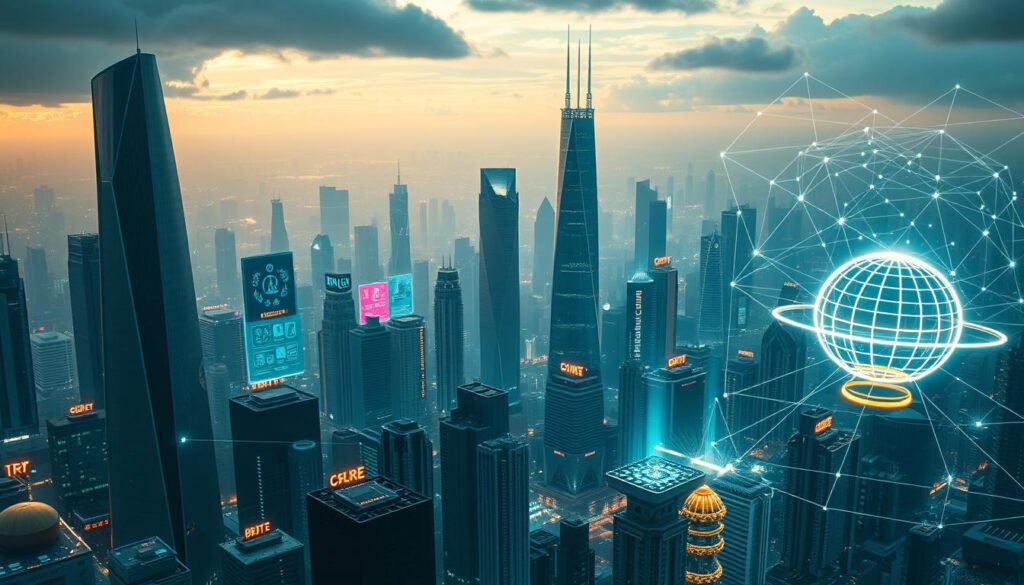
Real Estate and Property Tokenization
Tokenization turns physical assets into digital assets that can be divided. Sites like Propy let people buy parts of properties. This makes real estate more accessible to everyone.
For example, you can now buy shares of luxury apartments on blockchain. This opens up new investment opportunities.
Supply Chain Management and Authentication
Blockchain makes sure products are real and where they came from. Luxury brands like LVMH use NFTs to prove their products are genuine. This builds trust with their customers.
Pharmaceutical companies also use blockchain. They track drugs to stop fake ones from getting sold. This keeps the supply chain safe and honest.
Healthcare and Educational Records
Healthcare systems like IBM’s use blockchain to keep patient data safe. Patients can control who sees their medical history. This keeps their information private.
Universities, like MIT, give out digital diplomas as NFTs. These diplomas can’t be tampered with and prove instantly that you graduated.
Event Ticketing and Membership Access
NFT tickets stop fraud. The NFL uses blockchain tickets to prevent scams. These tickets also come with special perks like memorabilia.
Creators get paid again when their tickets are resold. This is a new way for artists to make money from their work.
Common Misconceptions About NFTs and Blockchain
Myths about NFTs and blockchain often spread confusion. Here’s what you need to know:
- Myth 1: NFTs Are Just JPEGs. While you can save a digital file, owning an NFT means owning a unique blockchain record proving authenticity. The image itself isn’t scarce—the ownership proof is.
- Myth 2: All NFTs Are Speculative Bubbles. Utility NFTs offer tangible value beyond price. Some grant access to communities, exclusive perks, or rewards programs, proving their use beyond speculation.
- Myth 3: Blockchain Transactions Are Anonymous. Public ledgers track every transaction. While users hide behind wallet addresses, activity is visible to anyone. Privacy isn’t guaranteed.
- Myth 4: Blockchain is Environmentally Harmful. Early networks like Bitcoin’s energy use drew criticism, but newer systems like Ethereum’s shift to proof-of-stake cut energy use dramatically.
- Myth 5: Buying an NFT Transfers Copyright. Ownership of a digital asset doesn’t grant rights to reproduce or sell copies. Creators retain intellectual property unless explicitly transferred.
Separating facts from fiction helps users avoid pitfalls. Blockchain’s transparency and NFTs’ potential depend on clear understanding—not assumptions.
How to Evaluate an NFT’s Value and Potential
Looking at NFTs is more than just watching prices. Investors and collectors need to check three main areas. First, research the creators and communities before buying.
Artist Reputation and Previous Sales
Start with the creator’s past work. Look at OpenSea or Rarible for sales history and trends. A creator with a growing floor price and loyal fans is a good sign.
Also, follow their social media. This shows how much people care about their work.
Community Engagement and Project Roadmap
- Watch Discord for activity and updates on the project’s goals.
- See what people are saying on social media to know if interest lasts.
- Strong communities can keep an NFT’s value high, even when prices drop.
Utility vs. Collectible Value Assessment
Think about what the NFT does. Does it give you access to games or events? Or is it just for display, like Bored Ape Yacht Club?
Look at how often it’s used and its rarity. This helps balance its value with its practical uses.
Good evaluation mixes old-school investment thinking with blockchain insights. Choose projects that fit your goals, whether it’s collecting, earning, or joining a community.
NFT Investment Strategies for Beginners
Starting with NFTs needs a solid plan. Always invest only what you can afford to lose. Spread your purchases across different NFTs, like art, music, and digital assets with utility. Don’t put all your money into one collection.
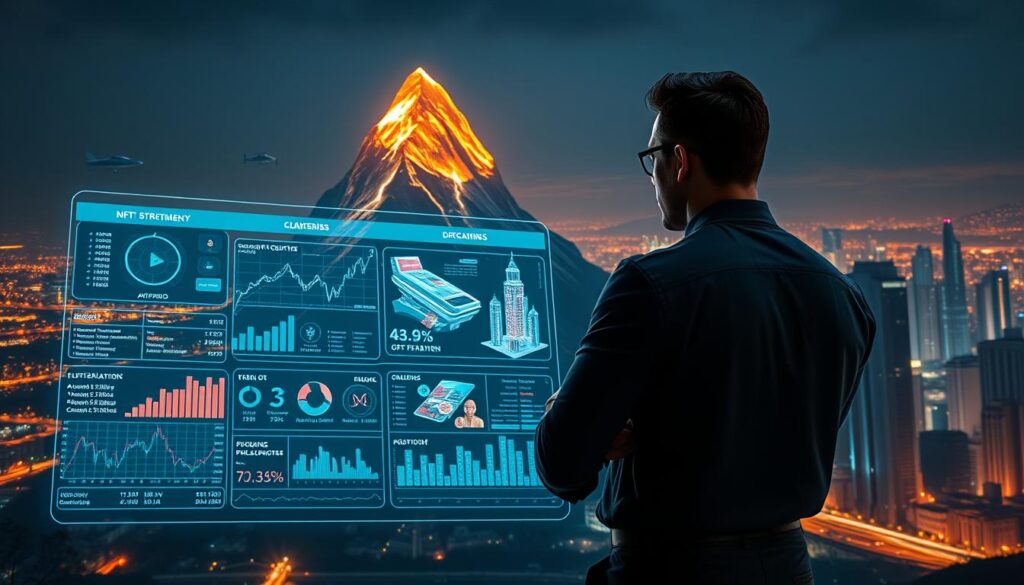
- Blue-chip NFTs: Established projects like CryptoPunks offer stability but come with higher entry costs.
- Emerging artists: Early support for creators can yield growth but carries higher risk.
- Utility-focused projects: NFTs tied to real-world use, like gaming items or access passes, may retain value over time.
Start with low-cost digital assets to learn the ropes and market trends. Watch price patterns to find good buying times. Don’t buy on impulse—do your homework before investing.
Keep up with tax rules for cryptocurrency deals. Record your buys and sells to figure out gains or losses. Stay updated on market cycles and project plans to make smart choices.
Investing well takes patience. Match your choices with your goals and how much risk you can handle. Aim for long-term gains, not just quick profits.
The Future Landscape of Digital Ownership and Web3
Blockchain technology is changing how we own things online with NFTs and DeFi. Now, you can get loans using digital assets or buy parts of expensive items. Even real estate and art are being turned into tokens on Ethereum, opening up new ways to invest.
Virtual worlds like The Sandbox and Decentraland are working together, making NFTs work everywhere. DAOs use NFTs to let people vote, giving communities a say in projects. Companies like Nike and banks are also exploring NFTs for tracking and proving authenticity.
New blockchain tools, like zero-knowledge proofs, are solving big problems. They keep things private and safe. As Web3 grows, keeping up with these changes will help us navigate this new, decentralized world.
FAQ
What is an NFT?
An NFT, or non-fungible token, is a unique digital asset. It shows ownership of a specific item or content on the blockchain. Unlike cryptocurrencies, NFTs can be anything from digital art to virtual real estate. They are perfect for collecting.
How does blockchain technology support NFTs?
Blockchain is a digital ledger that records transactions securely. It helps NFTs by proving their authenticity and ownership. This is thanks to blockchain’s immutability and transparency.
What are gas fees, and why do they matter?
Gas fees are costs for using blockchain networks. They change based on how busy the network is and the transaction’s complexity. Knowing about gas fees is key for NFT buyers and sellers, as they affect costs.
Can NFTs be used beyond digital art?
Yes, NFTs have many uses. They can be in real estate, supply chain management, healthcare, and event tickets. They offer new ways to own and access things.
What should I consider when evaluating an NFT’s value?
Look at the artist’s reputation, sales history, and community engagement. Also, check the project’s roadmap and what the NFT offers. Researching well helps make smart choices.
What are some common misconceptions about NFTs?
Some think NFTs are just digital images or part of a bubble. But NFTs prove ownership on the blockchain and have real uses. Knowing this helps understand their value.
How can I securely store my NFTs?
Use cold wallets for better security against hacks. Also, use two-factor authentication and keep your wallet’s seed phrase safe.
What is the relationship between NFTs and decentralized finance (DeFi)?
NFTs and DeFi work together by providing loan collateral and enabling fractional ownership. They help create new financial models. This is a big change in digital finance.
What role do smart contracts play in NFTs?
Smart contracts are agreements on the blockchain that run automatically. They handle NFT transactions, ensure creators get royalties, and manage other functions. This all happens without middlemen.
What are some popular NFT marketplaces?
OpenSea, Rarible, and Nifty Gateway are top NFT marketplaces. They offer different assets and fee structures. There are also specialized markets for art, music, and gaming.



